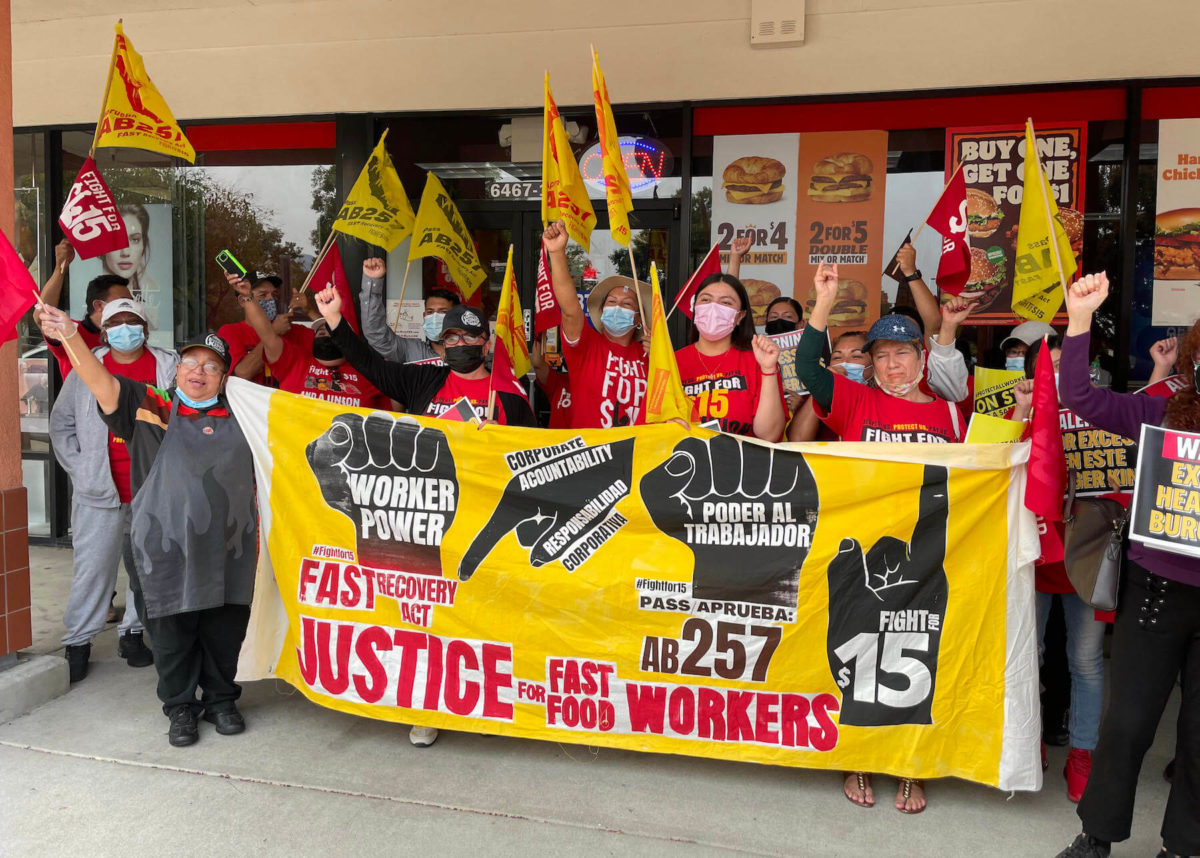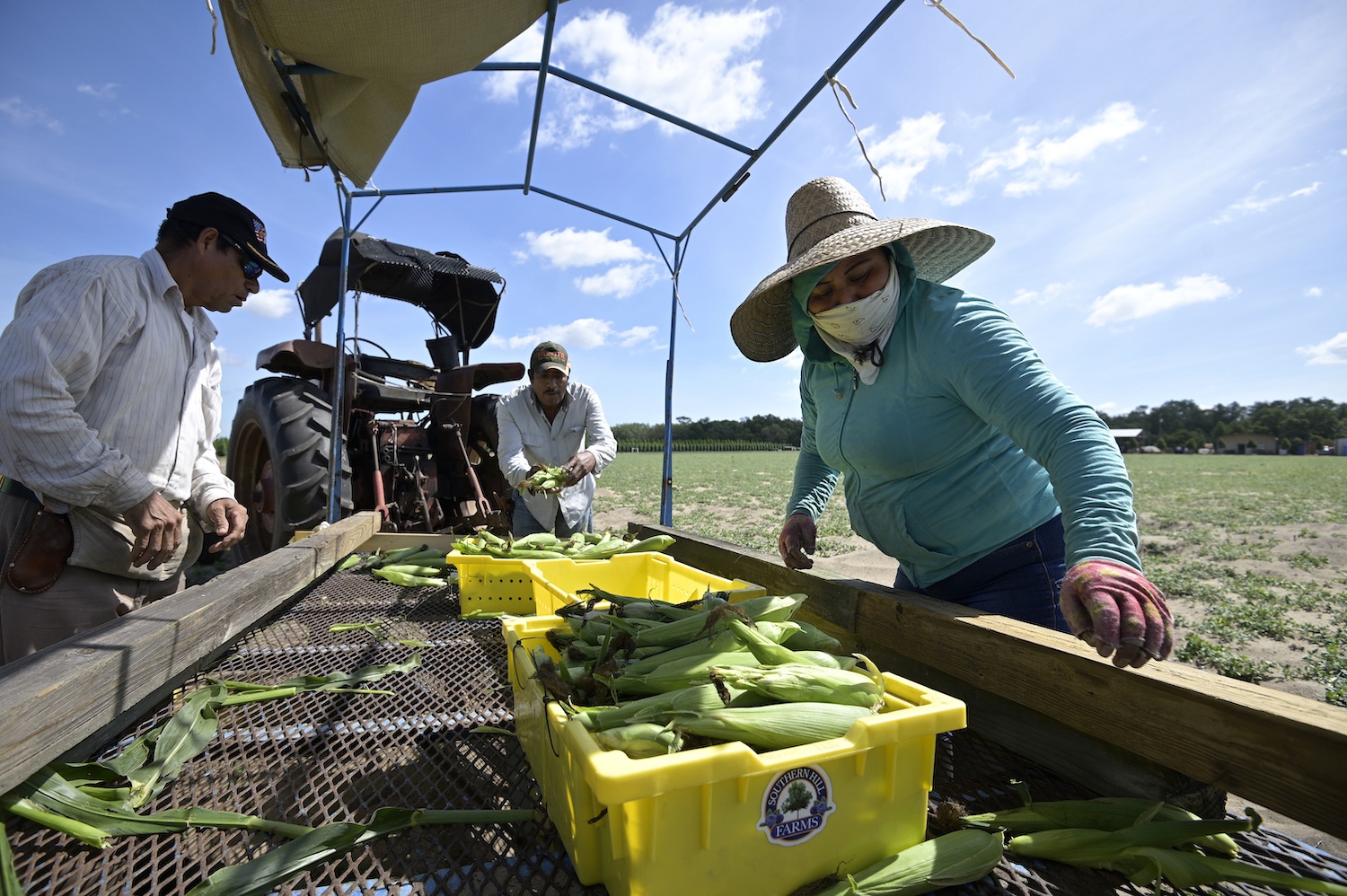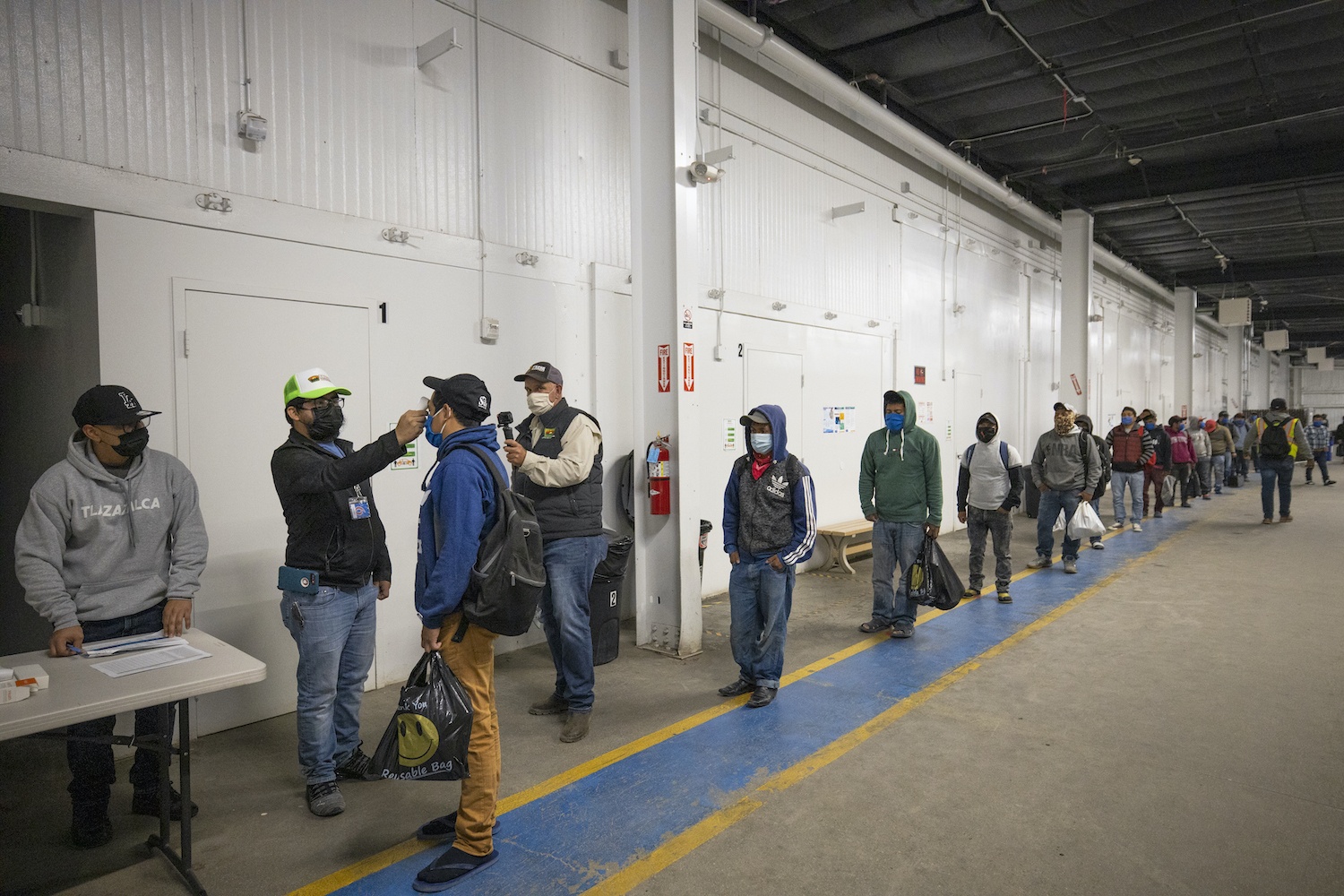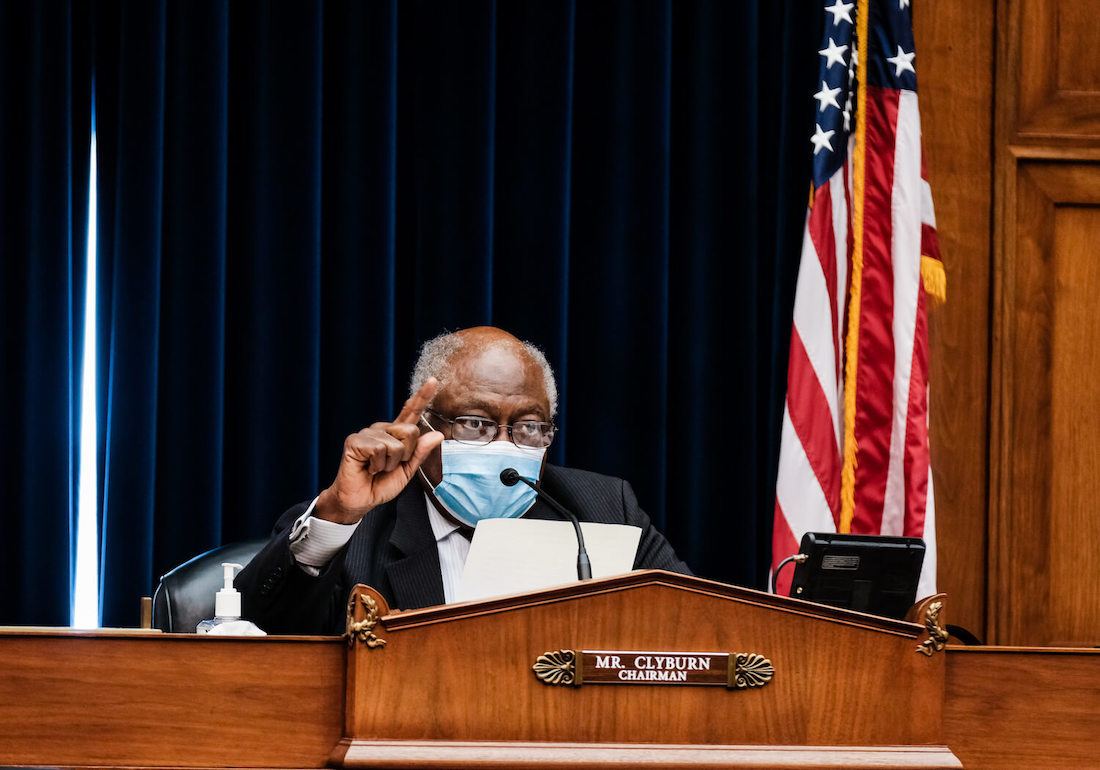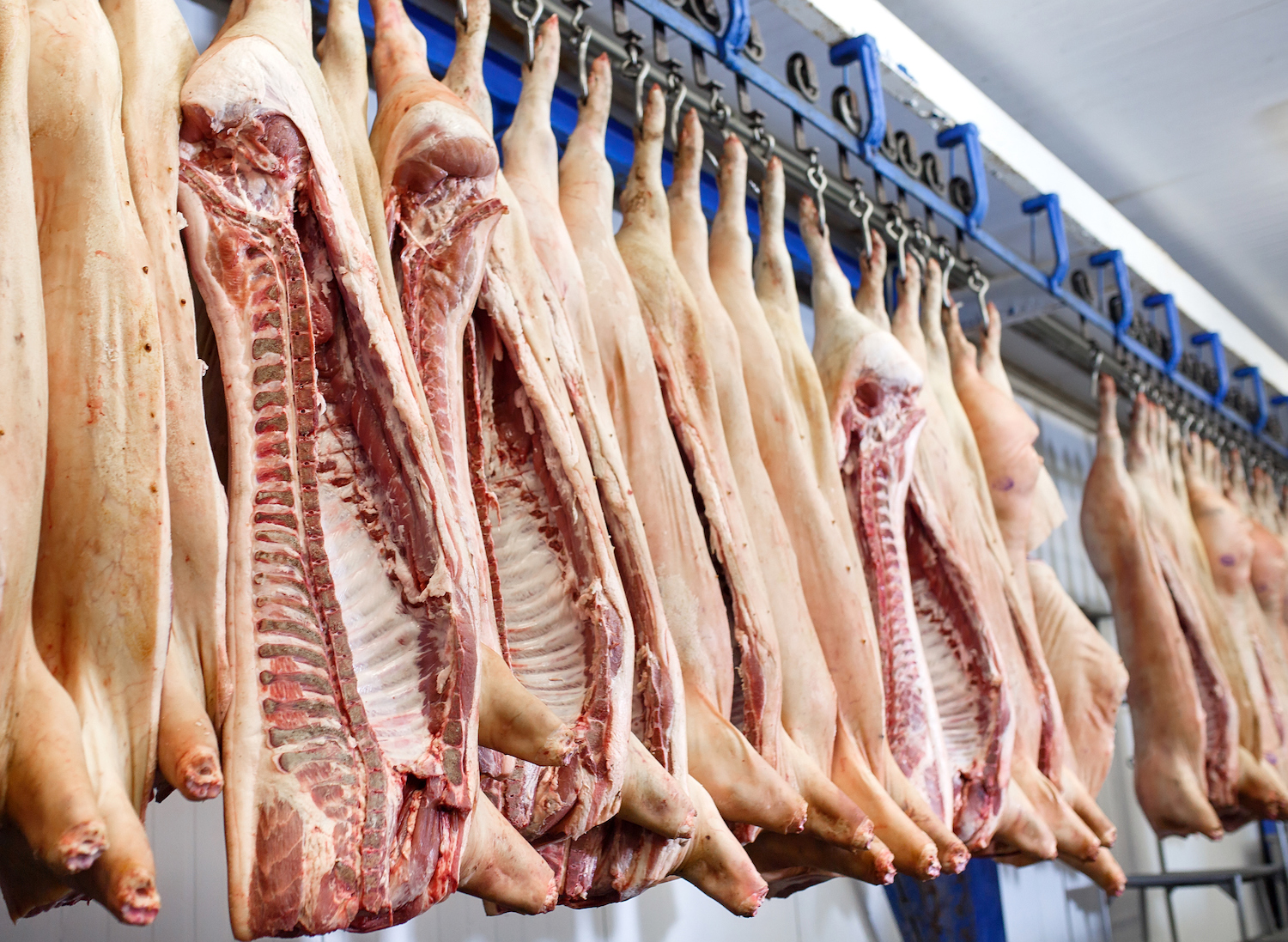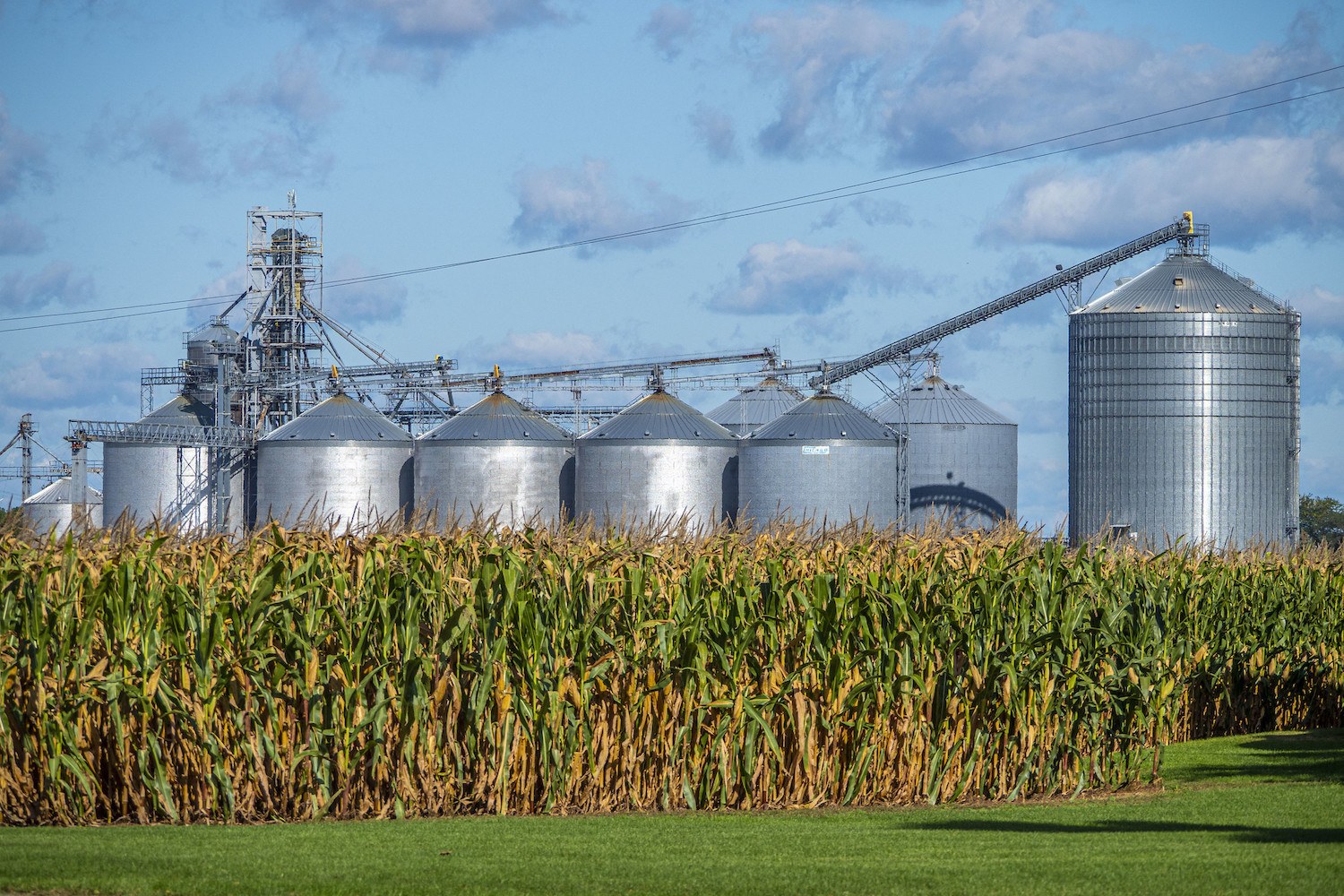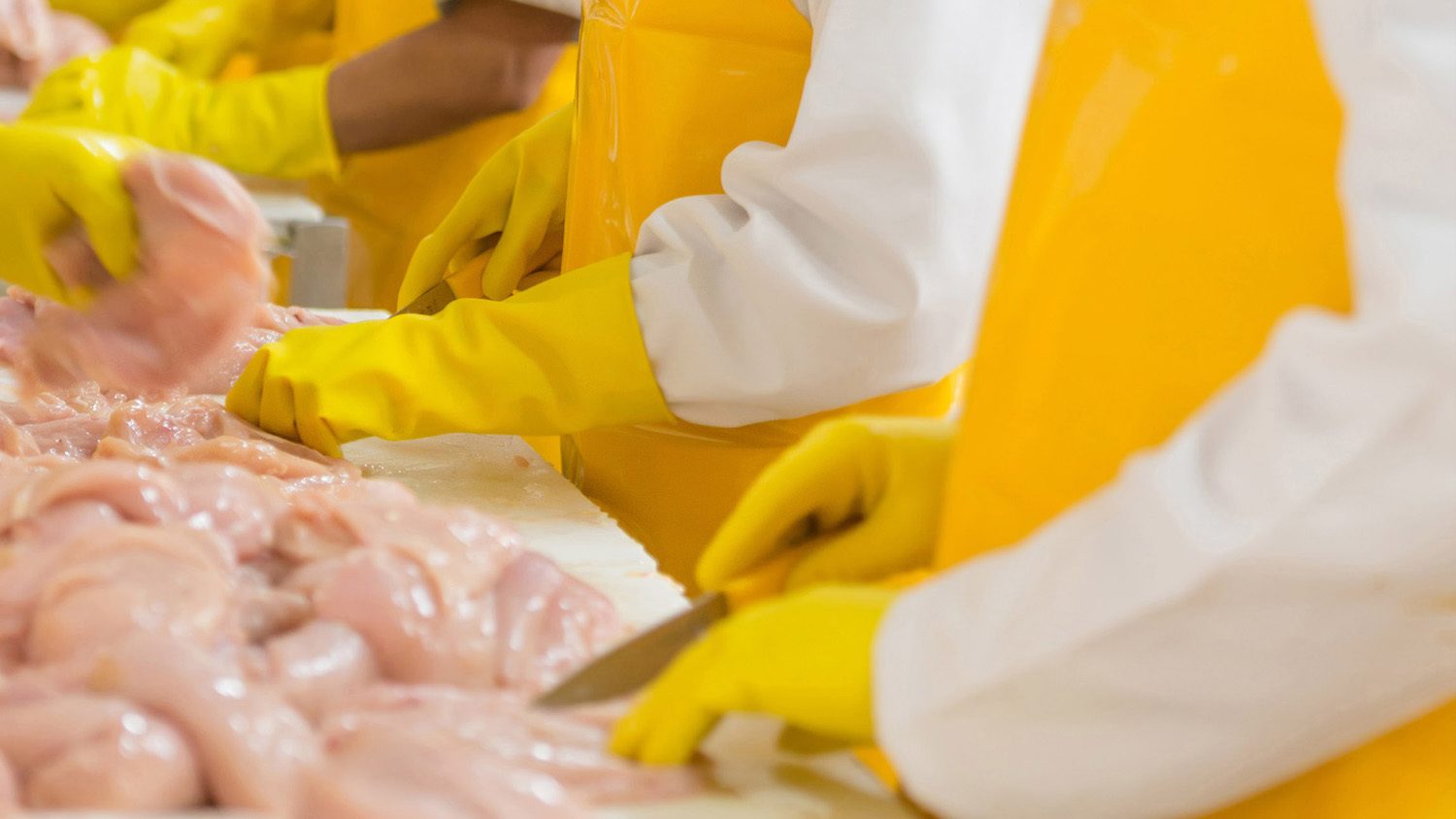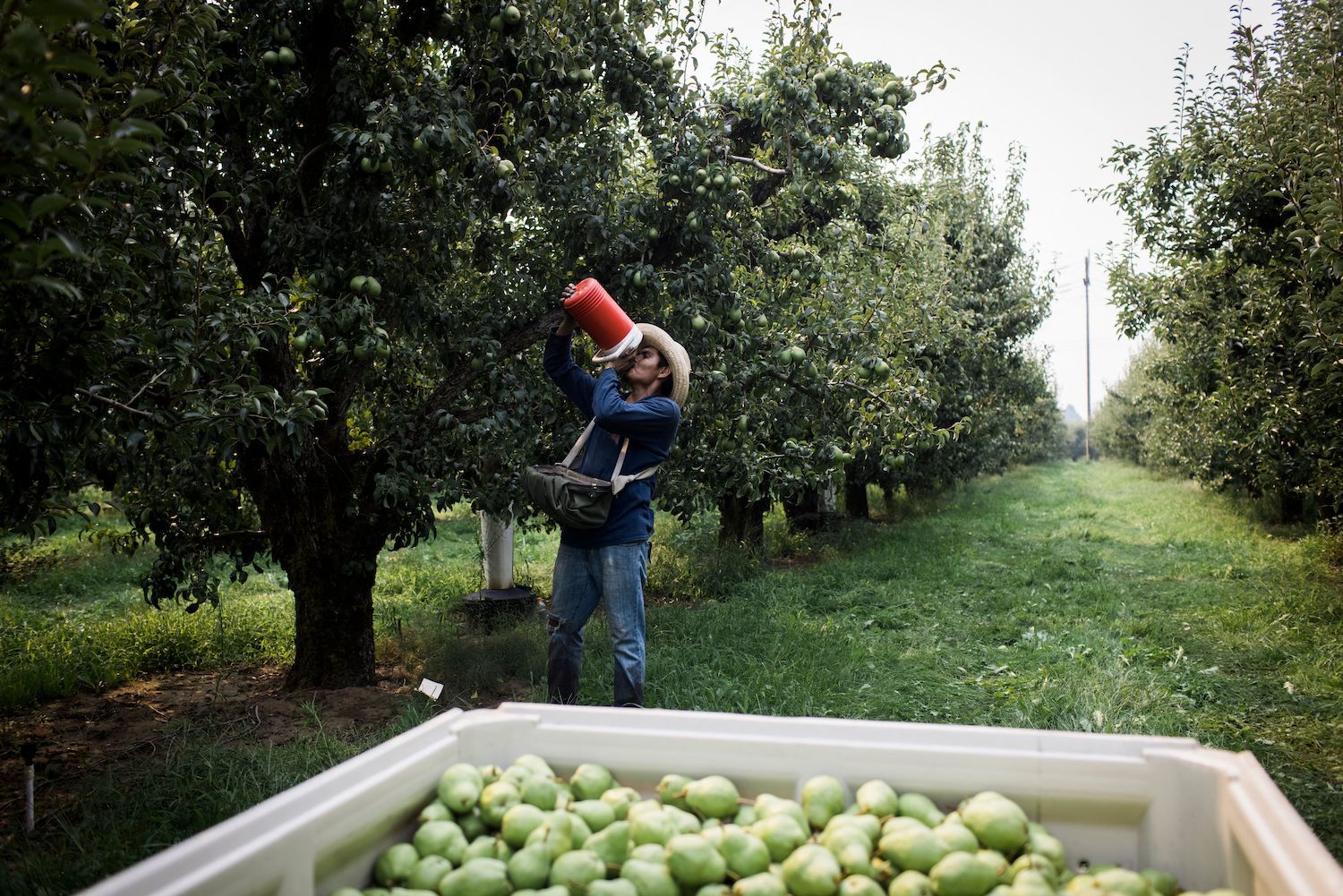
MICHAEL HANSON/AFP via Getty Images
OSHA will begin the rule-making process to protect workers in industries including agriculture, meatpacking, and food service.
The Biden administration announced on Monday that it is developing the first federal standard to protect workers from the effects of extreme heat, following a series of record-breaking temperatures that swept the nation this past summer. “Rising temperatures pose an imminent threat to millions of American workers exposed to the elements, to kids in schools without air conditioning, to seniors in nursing homes without cooling resources, and particularly to disadvantaged communities,” President Biden said in a statement. “My administration will not leave Americans to face this threat alone.”
Pictured above: Fernando Llerenas drinks water while picking pears in Hood River, Oregon on August 13, 2021. – Amid an abnormal heat wave in the Pacific Northwest, farm workers are having their days, and profits, cut short by the extreme temperatures.
The White House said that the Department of Labor’s Occupational Safety and Health Administration (OSHA) will begin the process of drafting rules aimed at preventing heat-related illness and death in both indoor and outdoor jobs, particularly in industries including agriculture, restaurants, and meatpacking. The agency, which is responsible for ensuring workplace safety, currently does not have a federal heat standard in place, despite lawmakers and grassroots organizers’ demands for one over the years, as well as research highlighting a clear link between workplace injuries and extreme heat. In this void, a handful of states, including California, Minnesota, Washington, and Oregon, have implemented their own permanent or emergency rulings. Florida, the country’s second-largest producer of vegetables, has repeatedly failed to pass heat illness prevention measures, even though its farm workers regularly endure 100 or more days a year when the heat index exceeds 83 degrees.
OSHA, with limited resources and facing regular industry opposition to its mandates, has a poor track record when it comes to the standard-setting process. In 2012, the Government Accountability Office (GAO) reported that it took the agency an average of eight years to develop and issue a new health or safety standard; in some cases, decades.
But the White House’s announcement gives workplace safety experts reason for optimism. Among them is Debbie Berkowitz, former chief of staff at OSHA during the Obama administration, who said that if the White House throws its weight behind the agency’s effort it “will, in the end, help the agency in getting a standard out in a more timely fashion.”
“It’s very encouraging that OSHA came out with, besides the plans for a new standard, a whole program to put in place immediately, in terms of better enforcement, using all of the tools that they have to focus and emphasize heat-related illness in the workplace.”
“A lot of the standard setting processes are White House reviews, and when the White House has issues, things can get delayed,” Berkowitz said. While there will almost certainly be some pushback from opposing industry groups that want to slow down the rule’s enactment, she predicts that with proper resources and the Biden administration’s backing, the first federal heat standard could be put into effect in under four years. “There are already three states that have some form of this standard. It’s water, rest, shade, acclimatization. Those are the key ingredients.”
As OSHA begins the effort to draft a rule, the White House said the agency will take additional steps to help protect workers in the short-term. Among them is the prioritization of “heat-related interventions and workplace inspections” when the heat index exceeds 80 degrees. The agency is also creating a National Emphasis Program, which will devote more staff and resources to inspections in workplaces with a high risk of heat injury, and a Heat Illness Prevention Work Group to provide a better understanding of the challenges and best approaches for protecting workers from heat injuries.
“It’s very encouraging that OSHA came out with, besides the plans for a new standard, a whole program to put in place immediately, in terms of better enforcement, using all of the tools that they have to focus and emphasize heat-related illness in the workplace,” said Peter Dooley, a health and safety consultant at the National Council for Occupational Safety and Health, a worker advocacy group. “I think it’s a really important milestone about acknowledging the severity of the hazard that’s been in the workplace for forever.”
The dangers of heat exposure at the workplace aren’t new. The Bureau of Labor Statistics (BOL) found that in 2019, there were 43 work-related deaths due to environmental heat exposure, and at least 2,410 other workers suffered serious injuries and illnesses, despite heat illnesses being “largely preventable.” Meanwhile, a recent study found that from 2001 to 2018 in California, hotter daily temperatures resulted in an additional 20,000 workplace injuries, both indoors and out.
“When workers are working for piece rate, and in really high temperatures, they’re not taking any breaks and not being paid by the hour, so if they took a break, it would cost them money.”
The persistence of these workplace hazards was on display this past summer, as workers endured the devastating effects of increasing heat waves exacerbated by climate change. For some, conditions at their worksites proved fatal, as was the case with an Oregon farmworker who died in June while moving irrigation lines in 104-degree heat. Fast-food workers like Leticia Reyes, an employee at a Jack in the Box in Sacramento, California, ultimately turned to strikes and walkouts to force their employers to remedy the lack of air-conditioning as outside temperatures soared past 100 degrees. “[T]he Biden administration has heard our demands and recognized that fast-food workers, farm workers and other essential workers need new rules in place to keep us safe as climate change leads to longer, hotter and more suffocating summers,” Reyes, a member of the Fight for $15 movement, said to The Counter in an email.
Even if OSHA proves successful in developing its heat standard expediently, some are skeptical about how much business interests might interfere with the rule’s potential to demonstrably change conditions for workers. Elizabeth Strater, director of strategic campaigns for United Farm Workers, said that based on her prior experience with the agency’s rule-making process, representatives from the agriculture industry will make the case that a paid-break mandate will cost them.
“When workers are working for piece rate, and in really high temperatures, they’re not taking any breaks and not being paid by the hour, so if they took a break, it would cost them money,” Strater said. Ideally, an employer would implement paid shade breaks. But that presents a bottom-line concern for employers. “If the employer is required to provide paid rest breaks during high temperatures for a few dollars, some of them would rather risk worker lives than pay them the few dollars it takes for the worker to take a break to cool their core body temperature down.”

